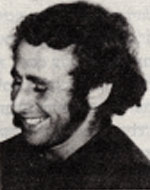Heiman, Menachem
Menachem, son of Irma and Moshe, was born on the 6th of Adar 5707 (March 6, 1947) in Kibbutz Ein Harod and studied in the elementary school and the high school in the agriculture. Along with his studies, Menachem nurtured his hobbies, which in time became an integral part of his life: knowledge of the country, desert trips and various landscapes, diving, photography and underwater archeology. Menachem was drafted into the IDF in mid-November 1965. After completing basic training and completing his tank studies at the Armored Corps School, he was appointed tank commander, but he did not want to give up his service in a position he excelled in. , And received great praise for his fighting ability and his resourcefulness, and his comrades remember mainly the retaliatory action in the Jericho area, where he participated: “Menachem’s platoon commander lost the north,” one of the members said. And shortly afterwards, two Jordanian tanks were set on fire. After a while, it became known that these two tanks had been ‘looking for’ the IDF for a long time, since in the past they had damaged our tools … Only after the end was a man of cool temper, vision and command, like Menahem, Menachem joined Kibbutz Eilot near Eilat, where he chose the place because of his proximity to the sea and the wild landscape around him, and the love of nature and the love of the land that were entrenched in Menachem, received another dimension when he lived in Kibbutz Eilot. In a number of missions to underwater archaeological research along the country’s shores. “During his time in the kibbutz, one of the kibbutz members said,” Menahem managed to work in almost all branches. He especially liked and succeeded in everything related to technique. Here the talent of hands and the technical concept, the precision and the clean work combined … Menachem was a man who knew how to enjoy life. He himself once said: ‘One can not always live in fear and escape from danger.” When the Yom Kippur War broke out, Menachem was in Sharm el-Sheikh and rushed to the base of his unit in the north, where he was sent to Ramah as a tank commander and took part in the battles of containment and incursion against the Syrians. On October 12, 1973, in the battle that took place near Khan-Arnabeh in the Golan Heights, his tank was hit and he was killed and brought to rest in his kibbutz, Ein Harod.
